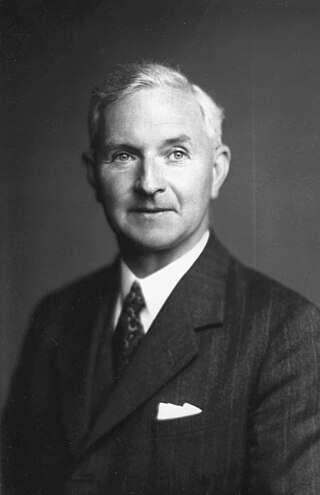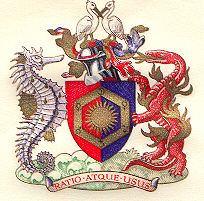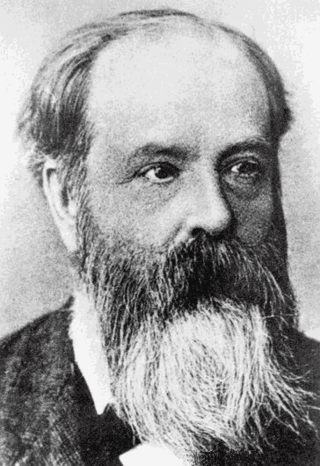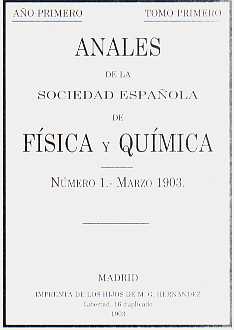
Michael Faraday was an English scientist who contributed to the study of electromagnetism and electrochemistry. His main discoveries include the principles underlying electromagnetic induction, diamagnetism and electrolysis. Although Faraday received little formal education, as a self-made man, he was one of the most influential scientists in history. It was by his research on the magnetic field around a conductor carrying a direct current that Faraday established the concept of the electromagnetic field in physics. Faraday also established that magnetism could affect rays of light and that there was an underlying relationship between the two phenomena. He similarly discovered the principles of electromagnetic induction, diamagnetism, and the laws of electrolysis. His inventions of electromagnetic rotary devices formed the foundation of electric motor technology, and it was largely due to his efforts that electricity became practical for use in technology.

Physical chemistry is the study of macroscopic and microscopic phenomena in chemical systems in terms of the principles, practices, and concepts of physics such as motion, energy, force, time, thermodynamics, quantum chemistry, statistical mechanics, analytical dynamics and chemical equilibria.

Sir John Edward Lennard-Jones was a British mathematician and professor of theoretical physics at the University of Bristol, and then of theoretical science at the University of Cambridge. He was an important pioneer in the development of modern computational chemistry and theoretical chemistry.

The Royal Society of Chemistry (RSC) is a learned society in the United Kingdom with the goal of "advancing the chemical sciences". It was formed in 1980 from the amalgamation of the Chemical Society, the Royal Institute of Chemistry, the Faraday Society, and the Society for Analytical Chemistry with a new Royal Charter and the dual role of learned society and professional body. At its inception, the Society had a combined membership of 34,000 in the UK and a further 8,000 abroad. The headquarters of the Society are at Burlington House, Piccadilly, London. It also has offices in Thomas Graham House in Cambridge where RSC Publishing is based. The Society has offices in the United States, on the campuses of The University of Pennsylvania and Drexel University, at the University City Science Center in Philadelphia, Pennsylvania, in both Beijing and Shanghai, China and in Bangalore, India.
The Faraday Society was a British society for the study of physical chemistry, founded in 1903 and named in honour of Michael Faraday. In 1980, it merged with several similar organisations, including the Chemical Society, the Royal Institute of Chemistry, and the Society for Analytical Chemistry to form the Royal Society of Chemistry which is both a learned society and a professional body. At that time, the Faraday Division became one of six units within the Royal Society of Chemistry.

The Royal Institute of Chemistry was a British scientific organisation. Founded in 1877 as the Institute of Chemistry of Great Britain and Ireland (ICGBI), its role was to focus on qualifications and the professional status of chemists, and its aim was to ensure that consulting and analytical chemists were properly trained and qualified.

The Physical Society of London, England, was a scientific society which was founded in 1874. In 1921, it was renamed the Physical Society, and in 1960 it merged with the Institute of Physics (IOP), the combined organisation eventually adopting the name of the latter society.
The Journal of the Chemical Society was a scientific journal established by the Chemical Society in 1849 as the Quarterly Journal of the Chemical Society. The first editor was Edmund Ronalds. The journal underwent several renamings, splits, and mergers throughout its history. In 1980, the Chemical Society merged with several other organizations into the Royal Society of Chemistry. The journal's continuity is found in Chemical Communications, Dalton Transactions, Faraday Transactions, and Perkin Transactions, all of which are published by the Royal Society of Chemistry.

Faraday Discussions is a scientific journal publishing original research papers presented at a long-running series of conferences on physical chemistry, chemical physics and biophysical chemistry which are also called Faraday Discussions, together with a record of the comments made at the meeting. The journal was originally published by the Faraday Society. The journal has been published by the Royal Society of Chemistry (RSC) since that society merged into the RSC. From 1972 to 1991, it was known as the Faraday Discussions of the Chemical Society. Traditionally there have been three Faraday Discussions a year, however, from 2014 around eight conferences are organised annually.
Physical Chemistry Chemical Physics is a weekly peer-reviewed scientific journal publishing research and review articles on any aspect of physical chemistry, chemical physics, and biophysical chemistry. It is published by the Royal Society of Chemistry on behalf of eighteen participating societies. The editor-in-chief is Anouk Rijs,.

Dalton Transactions is a weekly peer-reviewed scientific journal covering original (primary) research and review articles on all aspects of the chemistry of inorganic, bioinorganic, and organometallic compounds. It is published by the Royal Society of Chemistry and the editor-in-chief is Russell Morris. The journal was named after the English chemist, John Dalton, best known for his work on modern atomic theory. The journal was named a "rising star" in 2006.
Perkin Transactions is a scientific journal devoted to organic chemistry published from 1997 to 2002 by the Royal Society of Chemistry. It was split into Perkin Transactions I and Perkin Transactions II. The predecessor journals published by the Chemical Society before the merger of that Society with other Societies to form the Royal Society of Chemistry were the Journal of the Chemical Society, Perkin Transactions 1 and Journal of the Chemical Society, Perkin Transactions 2 (1972-1996). They were replaced by Organic and Biomolecular Chemistry. The name honours the chemist Arthur George Perkin.

Philosophical Transactions of the Royal Society A: Mathematical, Physical and Engineering Sciences is a fortnightly peer-reviewed scientific journal published by the Royal Society. It publishes original research and review content in a wide range of physical scientific disciplines. Articles can be accessed online a few months prior to the printed journal. All articles become freely accessible two years after their publication date. The current editor-in-chief is John Dainton.
The Ceylon Journal of Science is a peer-reviewed open access scientific journal established in 1924 by the Government of Ceylon. The journal was the result of the merger of Annals of the Royal Botanic Gardens, Peradeniya, Spolia Zeylanica, and Bulletin of the Ceylon Fisheries. The journal had several sections, covering different fields, but now consists of a single quarterly publication.

Geophysical Journal International (GJI) is a monthly peer-reviewed scientific journal in the field of geophysics. It is published by Oxford University Press on behalf of two learned societies: the Royal Astronomical Society (RAS) and the Deutsche Geophysikalische Gesellschaft, who select and peer-review the contents.

The Spanish Royal Society of Chemistry (RSEQ) is a Spanish scientific society dedicated to the development and dissemination of chemistry, in its aspect of pure science and in its applications. It originated in 1980 after the split of the Spanish Royal Society of Physics and Chemistry which itself was founded in 1903.
Acta Chemica Scandinavica was a peer-reviewed Nordic scientific journal in the fields of chemistry. The journal was established in 1947 and was jointly managed during 53 years from beginning of 1947 until end of 1999 by the chemical societies in Denmark, Finland, Norway and Sweden. The journal was jointly owned by the four chemical societies through the Publishing Association Acta Chemica Scandinavica. The Swedish Chemical Society managed the administration of the Publishing Association at their Secretariat in Stockholm.











